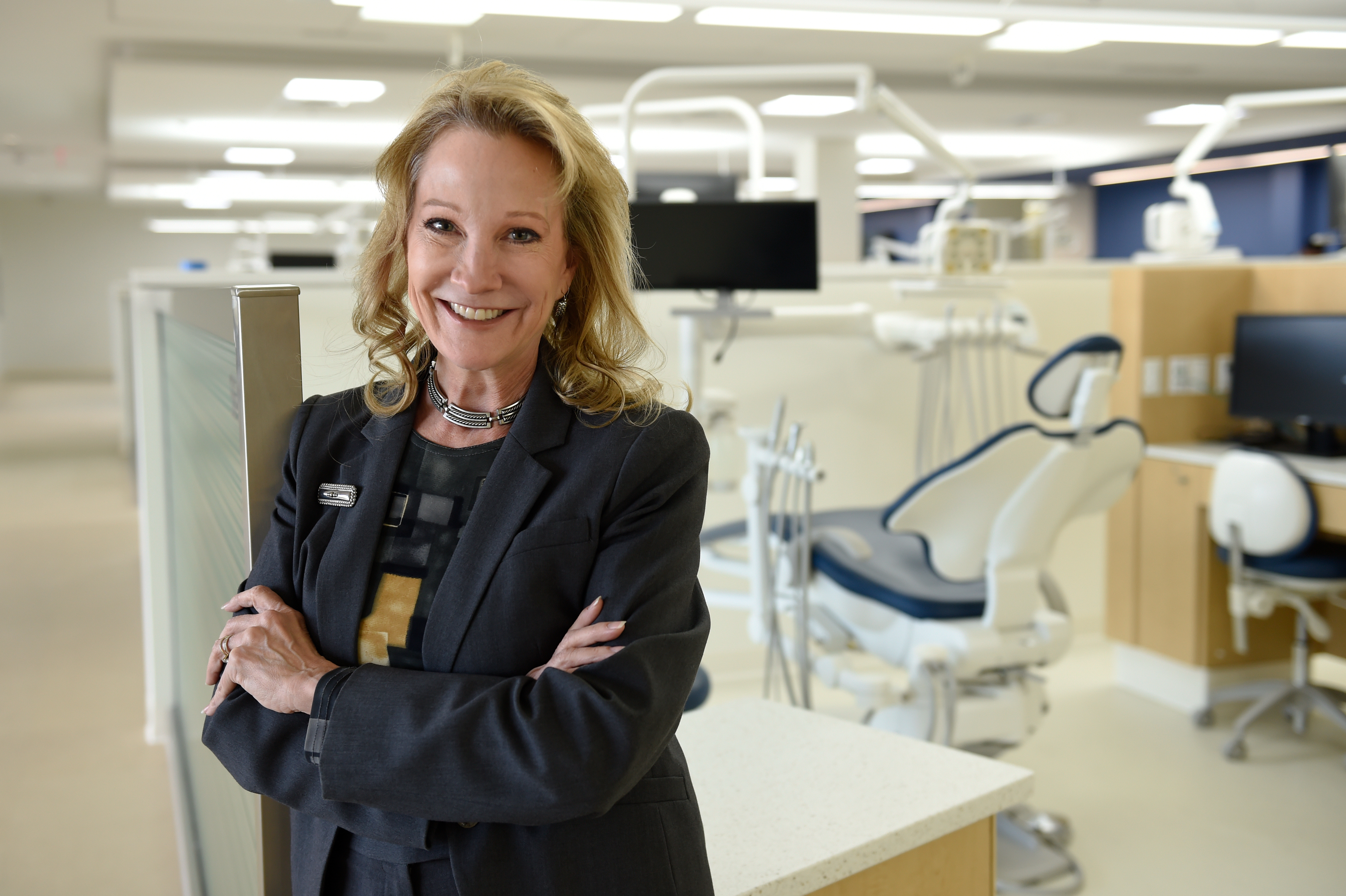As medicine moves toward an integrated approach to care, UConn’s new dental dean sees a greater role for dental medicine in the delivery of that care, and a strong foundation already in place to make that happen.
Dr. Sharon Gordon, who arrived from the East Carolina School of Dental Medicine last summer, says it’s part of what drew her to UConn: more broadly, the rich history of partnership between the medical and dental schools, but notably the basic sciences curriculum they share in the first two years, focusing on interprofessional training.
“We’re perfectly poised to move to the next steps, which would be providing clinical care together,” she says. “The idea is students moving into the clinics together, learning how to take care of patients together, so when they graduate they will be prepared for interprofessional practice.”
The evidence shows that more comprehensive care of the patient gives better health outcomes overall. — Dr. Sharon Gordon
Health care financing already is trending toward a more holistic view of the patient and greater emphasis on outcomes; a next step is recognition of the connection between oral health and overall health, Gordon says.
“Thinking about dentistry and where it is on the spectrum of reimbursement, if we don’t embrace that, we’re going to be left behind,” Gordon says. “But more importantly, the evidence shows that more comprehensive care of the patient gives better health outcomes overall.”
To help UConn Health get there, Gordon wants to continue building on the concept of students working in group-practice clusters in the clinic. A program fittingly known as CONNcept (Connecticut Comprehensive Education and Practice Team), established under the leadership of Gordon’s predecessor, Dr. R. Lamont “Monty” MacNeil, aims to simulate a true practice setting. As part of this, Gordon’s vision also includes incorporating nursing students, students from Tunxis Community College’s dental hygienist program, and, eventually, expanded-function dental assistants. Collectively, these disciplines can train together and, ultimately, practice together, improving patient outcomes through this new model of care.
This story first appeared in the Spring 2019 issue of UConn Health Journal. For more stories on UConn Health research and clinical innovations, visit healthjournal.uconn.edu.



